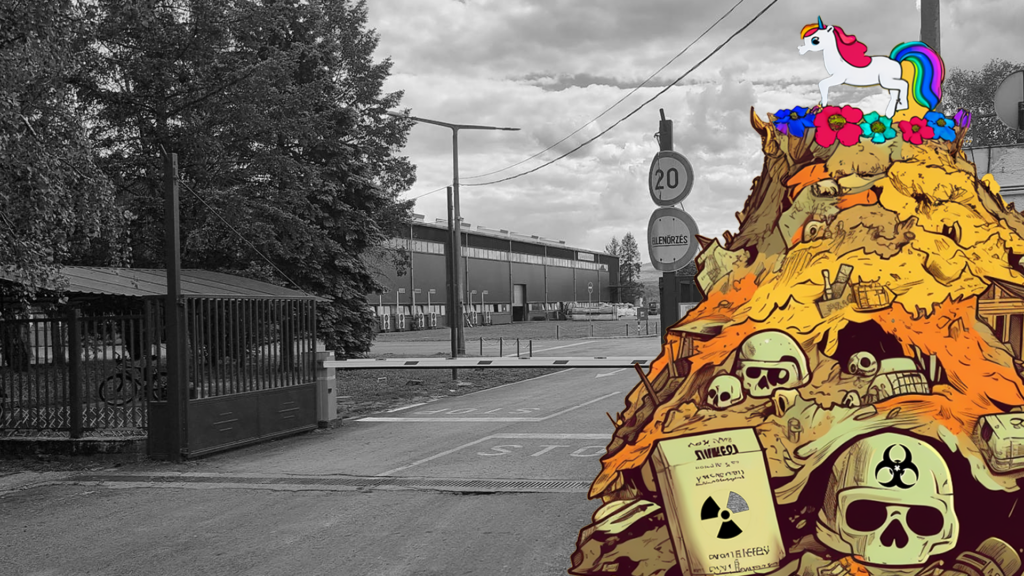The https://english.atlatszo.hu use cookies to track and profile customers such as action tags and pixel tracking on our website to assist our marketing. On our website we use technical, analytical, marketing and preference cookies. These are necessary for our site to work properly and to give us inforamation about how our site is used. See Cookies Policy
Hungary dreams of becoming an EV battery colossus, but risks becoming a poorly-run waste management giant instead
The Hungarian government is doing its utmost to make Hungary an EV battery manufacturing superpowerdom. But it forgets to mention the fact that the mountains of rubbish built from discarded batteries for electric cars are multiplying at a rapid pace. For months, Átlátszó has been gathering evidence to expose the life-threatening failures around battery processing plants, made possible by the lax regulatory regime in Hungary. Workers exposed to carcinogens repeated explosions and fires, fraudulent labels, and flammable batteries stored without fire protection – the downside of the brave new superpower dream. Video.
All his life, Rudy was told he was too small to play college football. But Rudy worked hard, and he dared to dream – and with his blood, sweat, and tears, Rudy succeeded and got his inspirational movie from Hollywood. Hungary, like Rudy, dared to dream.

The world was not ready for the country’s quantum leap into EV battery manufacturing superpowerdom. Unfortunately, Hungary was not ready for the breakthrough either – now, the country finds itself rapidly accumulating growing piles of discarded EV batteries without adequate infrastructure to safely dispose of the materials.
Instead – in a move that didn’t come as a surprise – Hungary’s waste battery processing industry has taken advantage of lax regulation to cut corners, endangering workers’ health and safety along the way.
Employees are exposed to carcinogens. Flammable materials are stored in factories without fire safety and protection. The booming industry is wracked by repeated explosions, fire incidents, and fraudulent labels. So, Hungary is similar to Rudy if Rudy had a dream, employed a bunch of people with poor working conditions and health hazards, and then, on the backs of these employees and with their blood, sweat, and tears, did not really succeed.
Our video on the waste battery processing industry is in Hungarian, but English subtitles are available in the settings.
We have previously reported on numerous occasions about regulation and operational anomalies in the domestic EV battery manufacturing industry. But head-scratching procedures aren’t limited to production – unsafe and murky practices are also prevalent in the storage and processing of used and discarded batteries.
It emerged that faulty batteries – which contain dangerous materials – were often stored without authorization in the open air or in partially open facilities. One sight stored heavy metal waste with falsified classification of the dangerous material.
Workers in the waste processing plants are exposed to serious health and safety risks, and despite working with carcinogenic material, they are not given adequate protection. Plants have seen explosions and fire incidents, which have resulted in injuries or death. Dangerous materials are transported without safety permits and flammable materials are stored with fire protection.
In contrast to other European countries, Hungarian environmental legislation is concerningly lax – there is no obligation to monitor air or water quality, and the processing of thousands of tonnes of EV batteries is not conditional on an environmental permit.
600 tonnes of used car batteries were stored without fire protection in Salgótarján – English
After a truck transporting batteries caught fire in Salgótarján, it was discovered that the site receiving the batteries had no fire safety equipment.
Lax legislation is joined by lenient punishment. If – when – the factories commit infringements, they are fined a few million forints, with no deterrent effect. The suspension of or restrictions on operations is rarely, if ever, considered.
Like Rudy, Hungary dared to dream. They dreamed of becoming an EV battery superpower – instead, they’re turning into a true star in unsafe waste battery processing. Hello, Hollywood – new movie idea.
Translated by Vanda Mayer. The original, Hungarian version of this story was written by Zsuzsa Bodnár and can be found here. Video by Bence Bodoky and Ferenc Sebő.

